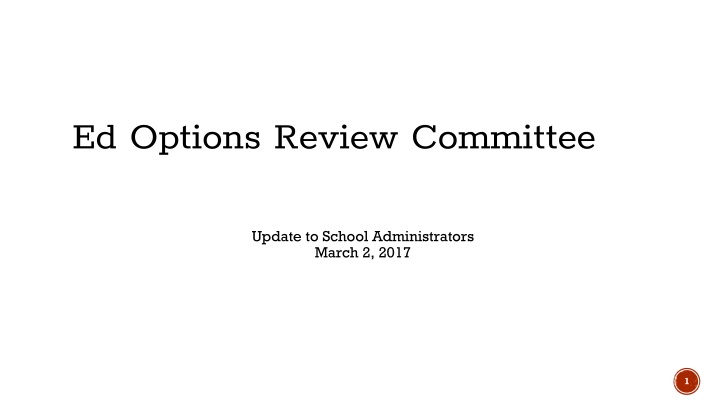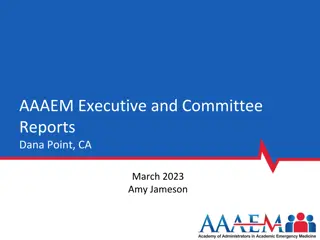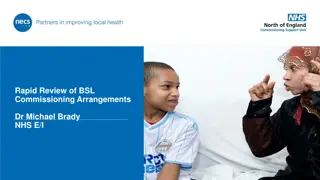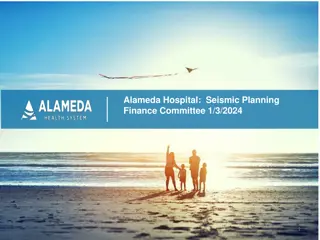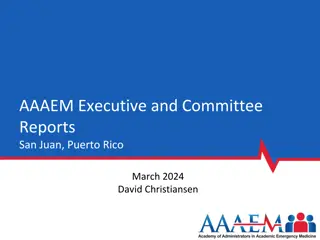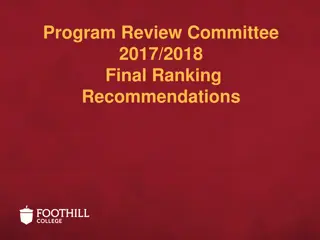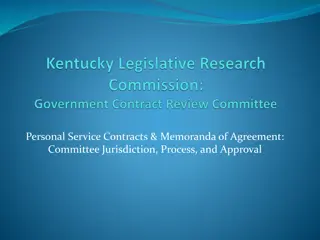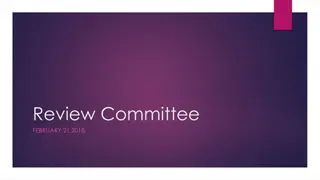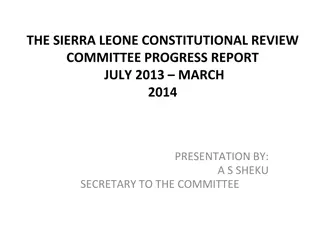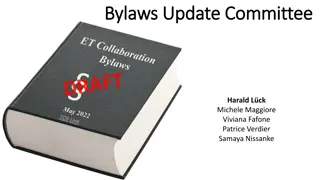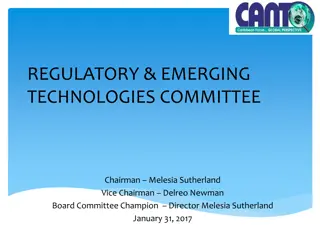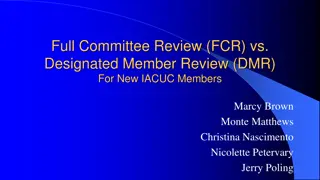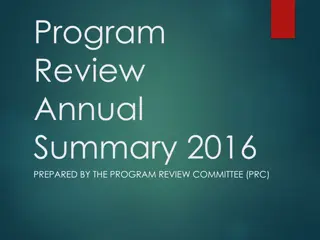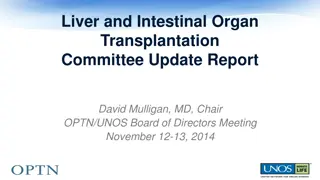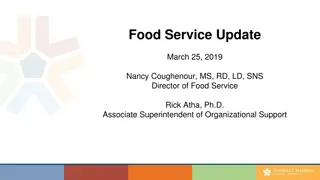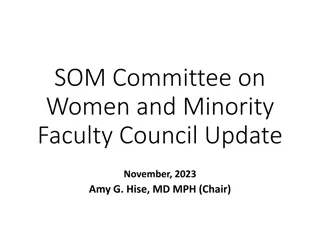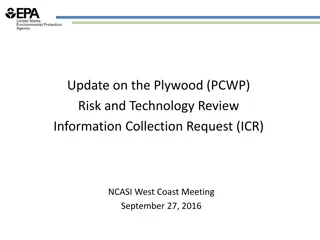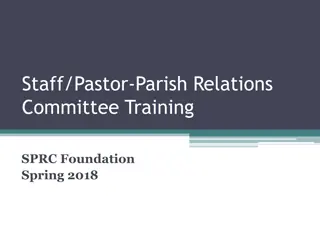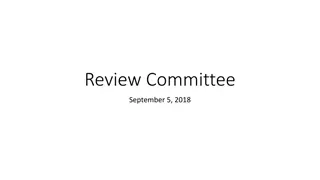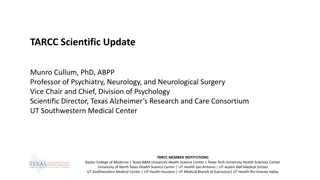Ed Options Review Committee Update
A comprehensive update to school administrators regarding the progress, objectives, and agenda of the Ed Options Review Committee, including committee members and a pre-assessment of educational options.
Download Presentation

Please find below an Image/Link to download the presentation.
The content on the website is provided AS IS for your information and personal use only. It may not be sold, licensed, or shared on other websites without obtaining consent from the author.If you encounter any issues during the download, it is possible that the publisher has removed the file from their server.
You are allowed to download the files provided on this website for personal or commercial use, subject to the condition that they are used lawfully. All files are the property of their respective owners.
The content on the website is provided AS IS for your information and personal use only. It may not be sold, licensed, or shared on other websites without obtaining consent from the author.
E N D
Presentation Transcript
Ed Options Review Committee Update to School Administrators March 2, 2017 1
Objectives 1. Explain how we got to the work, what work was accomplished, what work still needs to be done. 2. Dispel a few myths. Comprehensive Draft of Ed Options - 2/8/17 Ed Options 1-page Overview - 2/8/17 2
Agenda 1. How the committee came to be 2. The work that has been completed to date 3. Proposed Values and Purpose 4. Recommendations and Next steps 5. Administrator Feedback 3
Ed Options Committee Members Carla Gay Korinna Wolfe Lorna Fast Buffalo Horse Amy Kleiner Sascha Perrins Kristie Lindholm Shannon McClure Meisha Geisler Judy Brennan Melissa Niiya Debbie Armendariz Fred Locke Sabine Rear Michael Bacon Jeanine Fukuda Oscar Gilson David Hobbs Sara King 4
Pre-assessment 1. T/F Educational options in PPS includes alternative schools, focus option schools, day and residential treatment schools, charter schools, dual language immersion programs, community- based alternative schools (CBOs), and other programs. 5
Pre-assessment 2. T/F Metropolitan Learning Center (MLC) and ACCESS are focus option schools. 6
Pre-assessment 3. T/F Alliance High School is a CBO Alternative High School. 7
Pre-assessment 4. T/F Schools like Sunnyside, Creative Science, and da Vinci enroll students who meet the criteria of being a good fit for the stated curriculum and program offered by these schools. 8
Pre-assessment 5. T/F Benson High School is one of the PPS Educational Options. 9
What is the Ed Options Review A committee of principals and central office staff was formed to review the district s portfolio of education options. The initial charge was to: Establish an ongoing process for reviewing educational options including measures of success Define the desired purpose and goals of education options Develop recommendations to align the education options system policy and procedures with the Racial Educational Equity Policy 10
Timeline - Key Events Culminating in the Creation of the Education Options Committee 2013 2014 2016 2015 2011 2008 2004 Education Options Review committee launched conducts initial analysis, including sites visits, and data review of education options; also revises tool and collects plan of operations from every Education Option school/program SACET formed: Superintendent Smith forms Superintendent Advisory Committee on Enrollment & Transfer, a diverse group of community representatives to provide guidance on High School System Design E&T related issues DLI expansion plan Approved by board. Education Options Policy created. Policy states that the district must have a review process for education options. Racial Educational Equity Policy approved. The policy calls out race-based disparities in schools, identifies the district's role in erasing them and holds up high expectations to ensure that all students reach their academic potential. SACET recommendations for K-8 System: issues recommendations related to K-8 system, including recommendation to conduct a quality review process for focus options Education Options Review committee releases draft proposal outlining proposed guiding values and purpose of Education Options Superintendent endorses majority of SACET s recommendations but asks that alternative programs and DLI programs be included in the education options review 11
Do you know? Who are Ed Options? 12
Education Options Committee Overview Initial Charge Define the desired purpose and goals of education options Establish an ongoing process for reviewing educational options Evaluation process Measures of success Align our work with the racial educational equity policy Develop recommendations Included in Scope: In-District Alternatives Thematic Focus options Dual language immersions schools *Community Based Alternative programs and Charter Schools were not explicitly in the scope of work charged to the Education Options Committee. However, in certain cases, the committee felt it was necessary to include them in analyses in order to provide a more comprehensive picture of the District s options. 13
Review Committee Process to Date Understand current education options system Develop values to guide Education Option system Propose desired purpose of Education Options Develop Assess current system against these values recommendations and outline future work Site visits Reviewed individual school Plans of Operation Reviewed enrollment, achievement and lottery data Reviewed previous, related documents (SACET recommendations, Ed Options Policy) Identify themes emerging from data Create guiding values based on themes Review data in light of guiding values Identify concerns and opportunities in current system Use guiding values and analysis of current system Align purpose to Racial Educational Equity Policy Outreach across stakeholders Provide information and recommendations for other district work and decision-making (e.g. DBRAC) 14
Do you know? What portion of PPS students attend Ed Options? 15
PPS Enrollment by School Type 2015-16 Key Point Approximately 72% of PPS students attend a neighborhood school Includes neighborhood schools that students attend outside their assigned attendance boundary 16 *In this analysis, Alliance, ACCESS, and MLC are included as PPS Alternatives. PISA, Teen Parent Services and Reconnection Services are included as Other PPS Special School or Service. Community based organizations are later shown together with PPS Alternatives on Slide 17.
Focus Option Enrollment PPS OVERALL ENROLLMENT FOCUS OPTIONS & DUAL LANGUAGE 17
Education Options Committee - Work to Date What it doesn t do? What it does do? Values to guide future planning for creation, modification, or possible closure of specific education option programs/schools Evaluation/assessment of individual education option programs or schools A framework for the development of a fair, equitable and transparent evaluation process of education options Articulation of which/if specific schools should move, change or expand A outline of systemic trends that should help guide location decisions in the future Guidance on specific locations for individual schools or programs An articulation of specific value that education options should bring to the PPS system 19
Proposed Values to Guide Education Options Equity of Access Evaluation for Effectiveness Sustainable, Adequate Resources and Operations Healthy Ecosystem of Schools 20
Proposed Values to Guide Education Options Equity of Access Eliminate the predictability and disproportionality of which student groups apply to, enroll in, and succeed in education options 21
Proposed Values to Guide Education Options Evaluation for Effectiveness Evaluate for effectiveness, including: that they attract and effectively serve the students they intend to serve; that promising practices from these schools are being shared, and to the degree possible, replicated in neighborhood schools; and that they contribute toward closing opportunity gaps for historically underserved students 22
Proposed Values to Guide Education Options Sustainable, Adequate Resources and Operations Clear understanding of what resources are required to sustain education options over time Adequate resources--such as teaching staff, building and location, transportation, and wrap around services provided in ways that support the purpose of each option 23
Proposed Values to Guide Education Options Healthy Ecosystem of Schools Education options as a desired destination in a context of a strong foundation of neighborhood schools Education options support the District s aim to create right-sized, right-resourced programs 24
Who: Specific populations of students PPS did not serve well; individualized, flexible and strategic supports not offered at comprehensive/neighborhood programs PROPOSED: Education Options Purpose Education Options can serve multiple purposes. How: wrap-around supports and intensive academic support; will require more resources to sustain than other schools. Meets alternative education statute. Personalized, Strategic Supports Who: Typically, student population is representative of the overall district population or at least representative of surrounding neighborhoods Who: Specific populations depending on the research aim of the program. How: Themes/curricular foci selected based on districtwide interest and demonstrated effectiveness at closing opportunity gaps. Due to logistical or financial constraints, the program may not be replicated districtwide. Specific Curricular Focus Incubating Practices How: Program/curriculum is different than what is currently offered at neighborhood schools. Program could one day be replicated in neighborhood schools. Ongoing and consistent evaluation of the program determines effectiveness and whether it should be replicated. 25
Do you know? What populations are represented at education options? 26
2015-16 District average: 28% 27
Key Recommendations Highest priority is addressing Alliance facility needs Next most urgent need is review of co-located DLI programs and focus options that will be impacted by upcoming enrollment balancing (DBRAC) work Additional priorities include establishing central supports and looking at admission procedures, updating policies, etc. 28
Next Steps Communicate findings and recommendations to key stakeholders including school administrators, PAPSA, teachers, PAT, families, schools, the PPS Board, and DBRAC (District-wide Boundary Review Advisory Committee). Assign department or committee responsible for implementation of recommendations Re-charter Education Options Review Committee, including naming an administrator and Executive Sponsor and revisiting membership based on next phase of work/priorities. Define timeline for first round of evaluations and communicate timeline to schools and families. Stay informed by visiting the PPS website and your school s website. 29
Please Provide Feedback Link to survey 30
